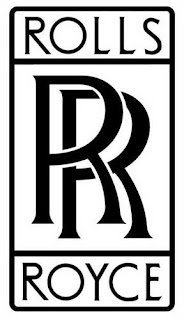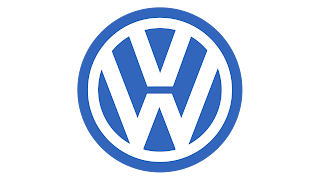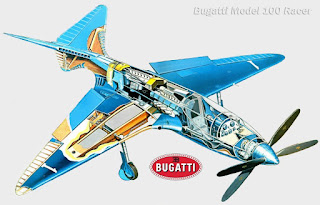History of Rolls Royce- Series Finale- Merger- http://www.autosmithcar.com/
The new owner, Rolls-Royce (1971) Limited, had among its board members Lord Cole (a former chairman of Unilever), Sir Arnold Weinstock (managing director of GEC), Hugh Conway (managing director Rolls-Royce Gas Turbines), Dr Stanley Hooker (Rolls-Royce Bristol), Sir William Cook (an adviser to the Minister of Defence), Sir St. John Elstub (managing director of Imperial Metal Industries), and Sir Charles Elworthy (former Chief of Defence Staff).[19]
Lockheed and Rolls-Royce take-off[edit]
The new aircraft with its three RB211 engines left USA for the first time and arrived in Paris on 1 June 1971.[20] At Palmdale California the L-1011 received its US Federal Aviation Administration's certificate of airworthiness on 14 April 1972, nine months late. On the day the chairman of Lockeed said ". . . we know that in airline service it (RB211) will prove itself to be one of the leading power plants in aviation history".[21]
The first airliner was delivered to Eastern Air Lines on 5 April 1972 but it had been beaten in the race to production by McDonnell Douglas's DC-10.
1973 Rolls-Royce Motors[edit]
Rolls-Royce Motors Limited was incorporated on 25 April 1971, two and a half months after Rolls-Royce fell into receivership. Under the ownership of the receiver it began to trade in April 1971 manufacturing motor cars, diesel and petrol engines, coachwork and other items previously made by Rolls-Royce's motor car and diesel divisions and Mulliner Park Ward. It continued to take precision engineering work on sub-contracts. In June 1971 it acquired all the business and assets used by the motor car and diesel divisions of Rolls-Royce and Mulliner Park Ward. Rolls-Royce Motors' permitted uses of the various Rolls-Royce trade marks was very precisely defined[3]
At the end of 1972 Rolls-Royce Motors employees in the United Kingdom were 5,855 in the car division and 2,311 in the Diesel division, a total of 8,166 people.[3]
In May 1973 it was sold to Rolls-Royce Motors Holdings Limited in preparation for its public flotation.[3]
Car Division[edit]
At that time the Car Division as well as making cars and special coachwork carried out investment foundry work and the machining of aero-engine components and produced piston engines for light aircraft together with other petrol and multi-fuel engines. Both divisions carried out development work for H M Government.
The car division's headquarters were in Pym's Lane and Minshull New Road, Crewe, bespoke coachbuilding remained in Hythe Road and High Road WillesdenLondon. The Crewe former shadow factory premises were bought from the Government at this time.[3]
Diesel Division[edit]
The Diesel Division made several types of diesel engine at its premises in Whitchurch Road, Shrewsbury as well as combustion equipment for aero turbine engines.[3]
- Rolls-Royce Motors Products
- Motor Cars
- Diesel engines
- Aero turbine engine components and aircraft piston engines mainly for Rolls-Royce 1971
- Other engines and products:
- B range of 6 and 8-cylinder petrol engines
- K range of multi-fuel engines
- various transmissions for fighting and other vehicles
- diesel shunting locomotives (Thomas Hill (Rotherham)[3]
Flotation of Rolls-Royce Motors Holdings[edit]
In the event the flotation met with a disappointing public response and more than 80 percent of the issue was left in the hands of the underwriters.[22]
Vickers Limited merger[edit]
On 6 August 1980 the shareholders agreement to the merger of Rolls-Royce Motors Holdings and Vickers Limited became unconditional.[23]
Perkins[edit]
The Rolls-Royce diesel business was acquired from Vickers in 1984 by Perkins. Perkins further developed the Eagle Diesels into the Perkins TX series of engines.
1977 Rolls-Royce drops (1971) from its name[edit]
The name of Rolls-Royce (1971) Limited was changed to Rolls-Royce Limited on 31 December 1977 the end of the company's financial year. The original Rolls-Royce Limited incorporated in 1906 and still in liquidation had been renamed Rolls-Royce Realisations Limited[nb 4] and had consented in March 1977 to the (1971) company being named Rolls-Royce Limited[24][25][26]
Limited was replace by plc (public limited company) In the summer of 1986 as Rolls-Royce Limited changed status following the plans for its sale and listing on sharemarkets.
1987 privatisation[edit]
In April 1987 the government offered for sale all Rolls-Royce plc shares. The heavily advertised issue was a remarkable success.[27]
Rolls-Royce's was an exceptionally long term business. Before a civil aero engine went into service its development could take 4 to 6 years, military engines often longer. Production might then extend a further 50 years including the manufacture of spare parts required long after complete engine production ends.[26]
Customers[edit]
According to the prospectus published for the 1987 issue of shares to members of the public Rolls-Royce was by then one of only three enterprises outside USSR and China able to design develop and produce large gas turbine engines. At that time its engines were installed in the aircraft of more than 270 civil carriers and were used by 110 armed services and 700 operators of executive and corporate aircraft.[26]
In addition its turbines powered the naval vessels of 25 different nations. Over 175 industrial customers operated Rolls-Royce gas turbines for power generation, gas and oil pumping and other industrial purposes. Its single most important customer was the United Kingdom's government. In the preceding five years about 70 percent of production went outside the United Kingdom.[26]
Competition[edit]
Rolls-Royce's competitors were GE and Pratt & Whitney (UTC). Aero engines were then only a part of GE and UTC activities as major industrial groups.
- Others included SNECMA, Turbomeca, MTU, Fiat Aviazione in Europe and USA's Avco, Garrett and General Motors' Allison. In spite of it being an exceptionally competitive field a number of the smaller manufacturers were already in collaboration with GE or with other smaller manufacturers as was Rolls-Royce.[26]
Divisions and products[edit]
At that time Rolls-Royce was organised into five business groups:
- 1. ICEG Civil Aero — demand governed by airline activity and profitability
- major engines in 1987:
- RB211-524, 535 series;
- IAE V2500 for Airbus A320, a consortium of Rolls-Royce 30%, Pratt & Whitney 30%, JAEC 23%, MTU 11% and Fiat 6%
- Tay, a development of the Spey superfan
- engines out of production but generating a significant demand for spares
- Avon (1951), Conway (1960), Dart (1953), Olympus 593 (1976), RB211-22B (1972), Spey (1964), Tyne (1960)
- 2. MEG Military Aero — demand had been stable recently and so of major importance to Rolls-Royce
- major engines in 1987:
- RB199
- Pegasus (with vectored thrust for VTOL combat aircraft)
- Adour
- Spey
- Viper
- helicopter engines
- Gnome
- Gem
- RTM322
- EJ200
- missile engines
- Odin
- 3. I&M Industrial and Marine — aero derived gas turbine engines
- 4. Repair and Overhaul
- 5. Nuclear — submarine steam-raising equipment
- together with these Services:
- Supply
- Corporate Engineering.
- Thank you for reading!




Comments
Post a Comment